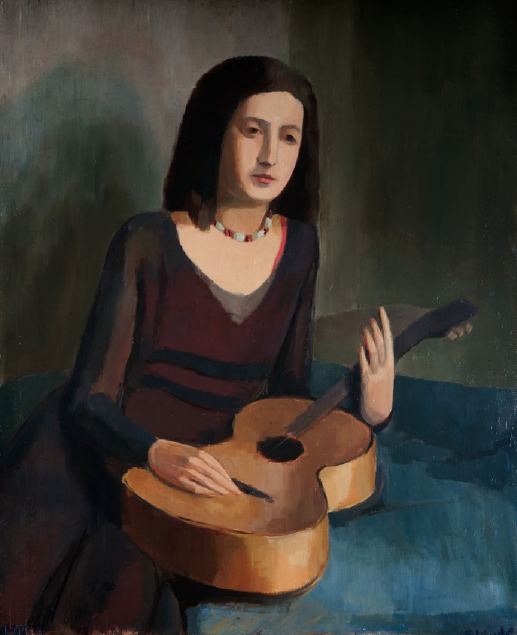
Hans-Joachim Staude, Girl with guitar
Oil on cardboard, 90 x 74 cm
1929
Who is this painter?
Francesco Poli, Elena Pontiggia
Hans-Joachim Staude is one of the most interesting (and in some ways most “eccentric”) German painters of his generation.
Yet his oeuvre is still not sufficiently known, especially in Italy where he lived and worked almost his entire life in the city of Florence. What is lacking is a more detailed critical analysis of his close relation with Italian Novecento painting, from Ardengo Soffici to Felice Carena, in the context of modern classicism in European art between the wars. A connection that makes the artist one of the “most Italian” of 20th-century German painters.
Born in 1904 to German parents in Port-au-Prince (Haiti), Staude is educated in Hamburg, where he attends the first big Munch exhibition in 1918. He immediately connects with the German Expressionism of the “Die Brücke” group, and especially with Karl Schmidt-Rottluff.
During these years, his development is underscored by introspection and a philosophical perspective. In 1920 he resolves to dedicate himself entirely to painting and in 1922 he abandons Expressionism. In 1925 he moves from Hamburg to Florence and spends the following years in the Tuscan capital, in Hamburg and in Paris. In 1929 he finally settles in Florence, where his work is influenced by the “modern classicism“ of Italian art in the 20’s and 30’s, and where he dies in 1973.
During this early Florentine period Staude produces a series of figures of intense plasticity that seem more sculpted than painted. He also paints a sequence of traditional landscapes, going beyond the momentary effect of Impressionism and almost stepping out of time. His series of still-life paintings reveal his German cultural influence with symbols of the ephemeral and of death. What sets the artist apart is his introverted but intense colour with elegiac and lyric allusions. His Expressionist formation renders his paintings different and even unique in a period, which focused on drawing rather than on colour.
After the war Staude remains consistent in his development. He is still firmly anchored to his peculiar figurative language, eluding the new informal and abstract tendencies. Yet his compositions reveal a continuous desire for the essential with colour becoming increasingly effusive.